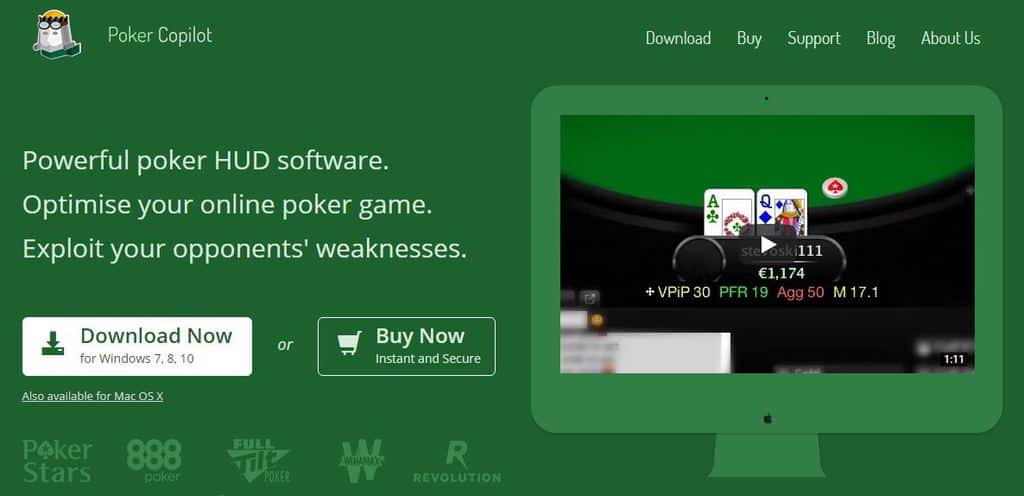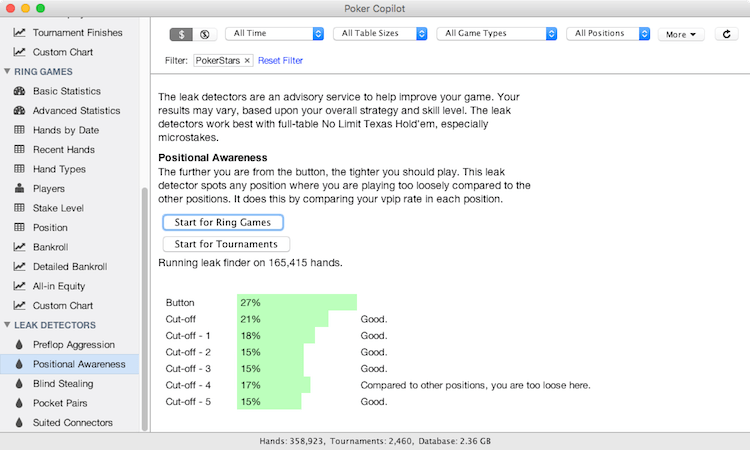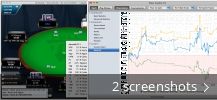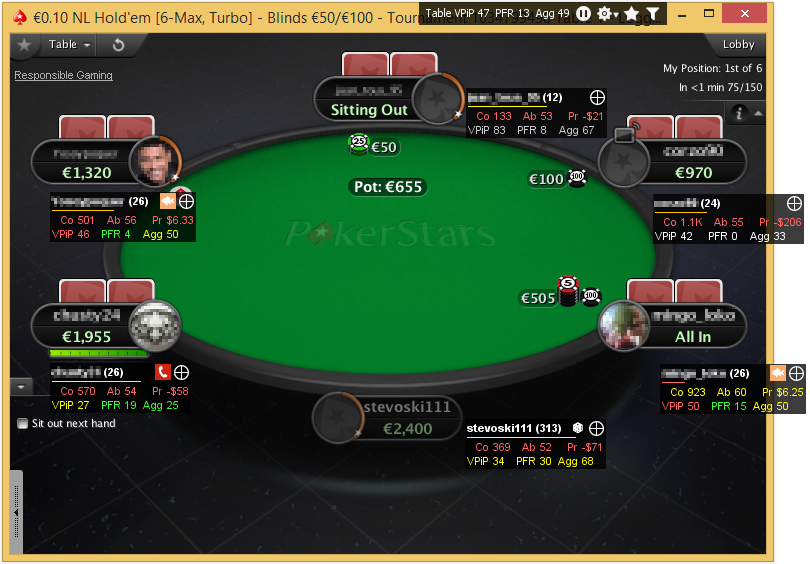Poker Copilot Free Download Game” Poker Copilot Free Download is said to be the oldest game still in the contemporary casino; naturally, Monte Carlo’s amusement is slicker than ever in the 21st-century online Poker Copilot Free Download world with stunning graphics and now live croupiers on closed-circuit IPTV. How to use Poker Copilot with ACR (America’s Cardroom) After their recent major update, ACR changed the default hand history folder location on your computer so Poker Copilot has trouble finding it. Avis Poker Copilot Mac, texas holdem app android, virgin river casino mesquite, crown casino robbed 32 million You have already created an account. Please login with your existing details or contact.
Poker Copilot 6 is the only poker tracker designed specifically for MacOS. Such specialization allows for optimal collection and analysis of played hands for all owners of Apple devices. The latest version added support for the Windows platform.
Aggression. It can be measured in several ways – aggression factor (AF), aggression percentage (Agg Pct) or aggression frequency (AFq).
Tradition requires that we mention the classic Aggression Factor /AF/ calculated as (Bet + Raise) / Call, checking or folding with no effect.

The drawback of this indicator is that due to its formula it can’t differentiate between a hyper-aggressive player raising any two cards and a fit-or-fold player throwing away everything but the pure nuts. Basically, all a high AF tells you is that the player doesn’t like to call.
I myself don’t rely much on this indicator, but it’s a part of the so called Holy Trinity of Poker HUD stats (VPIP, PFR, AF) so you have to know what it does.
In order to see a nuanced picture, you need different indicator – and which one you’ll use depends on your poker HUD program of choice.
Aggression percentage /Agg Pct/ is used in Holdem Manager and represents the frequency a player takes an aggressive action on a given street. So if I bet the flop but check the turn and river I would have 33% Agg Pct because I made 1 out of 3 aggressive actions.
Aggression frequency/AFq/ is used in Poker Tracker and is calculated as (total bet + total raise) / (total bet + total raise + total call + total fold) * 100, the idea being to include all possible actions in the divisor of the equation.
There is a slight difference in the way Agg Pct and AFq are calculated, as Agg Pct sees checking as passive and AFq as neutral. Some players say that counting checks as neutral is OK as the player could intend to check-raise, but I personally prefer the Holdem Manager Agg Pct statistic – it’s more straight-forward. The probability of a Check-Raise can (and should) be analyzed using the separate Check-Raise statistic, but more on that later on.
Both Agg Pct and AFq start to become useful for the different streets after about 300 hands. Knowing these stats allows you to clearly identify overly passive and aggressive players. As far as ranges go, an Agg Pct less than 30% is extremely passive and more than 60% extremely aggressive. AFq range is similar – too passive when less than 35% and too aggressive over 65%. The slight difference occurs because checks are neutral in AFq and not counted as passive. These ranges depend heavily on the limit and the type of table – lower limits usually have more timid players compared to the higher limits and shorter tables see more aggression than full ring tables.
As always, remember to look at the stats for the individual streets – often players are very aggressive on the flop but proceed differently on the turn and the river.
Examples using Agg Pct and AFq
/For sake of simplicity we’ll assume all opponents have stacks of about 100BB/
FR (full ring) table, you are in middle position with a pair of 6s. A player in EP (early position) limps in, you limp in, and the BB (big blind) checks. Flop comes 259 rainbow (of different suits). The big blind bets half of the pot and the early position player folds. Now what? Well, let’s look at his stats (we’ll assume a decent hand sample is available).
a) VPIP=27 / PFR=15 / Agg Pct=55 (Agg Pct Flop=64).
The opponent is definitely a loose-aggressive player (LAG). He obviously plays a lot of trash hands, so his flop aggression percentage of 64 is borderline crazy. He didn’t raise pre-flop, so a big overpair is unlikely; probably he caught something on the flop. Against a passive player we can consider folding here, but this particular opponent can bet just as easily second or third pair, or simply two overcards. You should at least call, but a better option may be to look at the villain’s Fold to F Raise percentage and if it’s high enough, raise him to force a fold.

b) VPIP=12 / PFR=5 / Agg Pct= 22 (Agg Pct Flop=28).
A weak-tight player bets two opponents out of position – a definite sign of a big hand – at least top pair with decent kicker. He probably would have slow-played a set or two pairs, but a nine in his hand would explain the bet as protection from overcards on the turn. Anyway, under the circumstances we have no more business in the hand and should fold.
Get a poker tracking program like Poker Tracker to put the odds in your favor!
Tournament poker remains one of the most popular formats of the game, mainly because it is through the heavily televised World Series of Poker (WSOP) that many new players are introduced to it.
When Chris Moneymaker – considered an “outsider” at the time due to his qualifying for the WSOP by winning his entry on an online poker site – won the prestigious competition’s main event in 2003, tournament poker was thrust into the global community’s consciousness, and it immediately became the most visible format of poker.
While the fundamental principles of No Limit Hold’em are shared between cash/ring games and tournament poker, there are certain strategies that are more effective in one than the other.
In this article, we take an in-depth look at tactics that are important to understand and implement if you want to achieve success in tournament poker. While our focus will be on tournaments, we’ll also be touching on certain principles that apply to both formats.
Before we begin, let’s quickly list the major differences between cash and tournament poker.
A note before we begin, this piece focuses on freezeout No Limit Texas Hold’em tournaments.
(Source: Beatthefish.com)
Tournament vs Cash – the Main Differences
- A player can enter and exit a cash game whenever they want while a tournament has a fixed start and end.
- In a cash game, the blinds remain fixed, while the blind levels in a tournament increase at a predefined frequency (typically 15 – 25 minutes).
- The purpose of a tournament is not to run out of chips. When you do, you are eliminated from the game and cannot re-enter, although some tournaments do allow players to buy back in.
- When a predetermined number of players are eliminated from the tournament, the remaining players all share the prize pool. Making it to this part of the tournament is called being “in the money.”
- The tournament ends when all but one player has been eliminated. That player is the tournament winner and receives the bulk of the prize pool.
- In cash games, chips are an exact representation of their monetary value, while tournament players “buy” their chip stack with a fixed buy-in amount. For instance, a tournament buy-in of $5.00 can see you start the tournament with a stack of $1500 in chips.
Tip #1: Start Conservatively
One of the most important principles to success at tournament poker is in monitoring the ratio between how much it will cost to play a hand (blinds + antes) and your chip stack. This is referred to as the M ratio, and we’ll be referencing it throughout the piece.
At the start of the tournament when you have a healthy M Ratio (over 25), getting involved in a hand with medium-strength cards is not a good strategy. When you’re still sitting comfortably, only play a hand when you have exceptionally strong cards or have position on your opponents.
Don’t be tempted to steal or protect blinds. These are tactics that should only be employed later in the tournament when the blinds represent a large portion of your stack size.
Survival is everything in the early stages. Building a healthy chip-stack should also be an objective, but not at the cost of your place in the tournament.
Tip #2: Be Aware of Opponent Stack Sizes

Once you’ve emerged from the early stages of the tournament and the table is seeing some more action, it’s important to bear your opponents’ stack sizes in relation to yours in mind before getting involved in very specific scenarios – specifically when it comes to going all-in.
- A player that has you comfortably covered (has a significantly larger stack size than you) is going to call your all-in with a wide range of cards since you don’t represent a big risk to his chip stack. Don’t bluff against such a player.
- A short-stacked player (especially one with an M Ratio below 10) will typically play extremely aggressively post-flop. While pushing these players around and bullying them pre-flop is an essential strategy, when the flop comes you can expect extreme aggression from them since they will regularly be pot-committed. Don’t expect them to fold to your light c-bet. Expect a shove in this scenario and unless you’ve hit the flop, you don’t want to be calling it and doubling them up.
- In the latter stages of a tournament, a player that has a chip stack roughly similar to yours is not going to get involved in a hand with you unless they want to protect their blinds or if they have an excellent hand. Be cautious when faced with aggression from a similarly-stacked opponent.
Tip #3: Employ the Push/Fold Strategy
In a nutshell, push/fold strategy is an “all or nothing” pre-flop approach that a player adopts when their chip-stack is depleted to the point where they can only see another ten hands, in other words, their M Ratio is less than 10.
When the blind levels are 75/150, and you only have $1,870 in chips, forget about limping, calling, or 3-betting preflop and consider each decision as either a fold or a shove.
The main reason for doing this is that you are maximizing your chances of picking up the blinds by getting all your opponents to fold to your extreme aggression and while your chip stack still represents a threat.
In the Poker Copilot blog, we recently published an in-depth look at how to employ this strategy to its maximum effect. Click here to read our the post titled: Essential No Limit Holdem Strategy: Push/Fold.
(Source: stock.adobe.com)
Tip #4: Steal and Protect Blinds
When the blinds get to a level where they represent a large portion of your chip stack, picking them up without seeing the flop is one of the most important strategies in tournament poker. In fact, there are certain conditions under which you needn’t even consider your cards when attempting this tactic.
If you are in late position, all the players have folded to you, and the two or three players who are going to act after you are all short-stacked, you can profitably raise with any two cards, provided you have the discipline to lay them down if you’re faced with a three-bet.
Conversely, when you are in the small or big blinds and have a relatively healthy stack (your M ratio is above 20), don’t be afraid to three-bet when faced with a raise from the dealer. In many cases they are betting very wide simply to steal your blinds and will lay down their cards. In this scenario, when your M Ratio is below 10, and you have decent cards, don’t bother three-betting – simply go all-in.
Tip #5: Think of the Greater Good
This is a relatively complex meta-game concept that has little to do with cards and more about getting closer to the money.
Consider this scenario.
There are seven players left in the tournament and the top six get paid. This scenario is also referred to as being “on the bubble.”
You are in mid position with A9s and your M Ratio is very healthy (20+). Under the Gun is short-stacked and goes all in. You call. There is another call from the dealer, who is also deep-stacked. So the short-stacked player now has the possibility of being eliminated by two players rather than one.
The flop comes K49.
You’ve made mid pair, which, if you were only in the hand against the other deep-stacked player, would have been a good spot for a bet. But if you do bet in this scenario, you run the risk of having the dealer fold, meaning that you will be the only player who can eliminate the short-stack.
Let’s say you do make a bet and the dealer folds his pocket 8s. You and the short stack flip your cards over, and he shows KT.
The turn and river come 8 and 3, and you double up the short-stack and everyone at the table hates you since the dealer would have made his set and gotten you all into the money.
(Source: stock.adobe.com)
A much better play here would have been for you and the dealer to simply check all the way down to the river to ensure that there is an extra chance of the short-stacked player being eliminated.
Tip #6: Take Advantage of the Bubble
Closer to the bubble, most of your opponents, except for those that are deep and short-stacked, are going to tighten up. No one wants to go home empty-handed, and most players in this scenario will simply wait for the short and deep-stacks to duke it out.
This is where a smart player will start picking up blinds. By paying attention to your opponents’ stack sizes and their playing style, this could be a very profitable period of the tournament for you.
Poker Copilot How To Use
When you are in position, don’t be afraid to show pre and post-flop aggression, but be careful on the turn and heed the advice given in tip #2 above (“Be Aware of Opponent Stack Sizes”).
Your goal here is to take down pots by taking advantage of the fear that will dominate the table, not to outplay your opponents with your advanced moves. Take risks here but be disciplined about laying down your cards when faced with aggression. Good players are going to see through this tactic and protect their blinds. Respect them.
Tip #7: Dominate When You’re Leading
Pokergrapher

If you’re the chip leader, it’s essential to bully the short and medium-stacked players. While the temptation may be strong to sit back and watch them eliminate each other, you need to acknowledge the immensely important role you can play in bringing this about. This is doubly effective as you near the bubble.
Your goal is to take advantage of the fear that your opponents have of your stack and pick up as many blinds as you can. Medium stacked players will be extremely hesitant to get involved in a hand with you and will lay down medium strength hands regularly. They do not want to get in a hand unless they know they are ahead.
It is vital that you take advantage of this scenario so that when it comes to the heads-up part of the tournament (only two players left), you are comfortably ahead.
Tip #8: Don’t Get Complacent When Playing Heads-Up
So you’re one of the final two players in the tournament. Now it’s important to face your biggest enemy: your own complacency.
That’s right, your biggest challenge when playing heads-up is the sense of security that accompanies making it this far. Yes, you’re already winning a large sum of money, but if you stay focused and spend some time learning about the nuances of heads-up play, you can win so much more.
In fact, simply by acknowledging this and remaining hungry to win it all, you are already in a better position than many of your heads-up opponents will be. You’ll be surprised how many of them simply “tune out” at this point and think of this stage of the tournament as a lottery.
It’s not. There is a lot of skill involved in playing heads up, and if you do the research necessary to improve this aspect of your game, the return on your investment will get a massive boost.
Poker Copilot Crack
Read our recent post on training sites that will help you improve your poker and find the sections dealing with heads-up strategy.
In Closing

Tournament poker is accessible, fun and full of new players who aren’t as dedicated as you in improving their poker skills.
By applying these tips and doing further reading and training, you are sure to find them the ideal space to build your bankroll.
Keep training. Keep reading. Keep improving.
Poker Copilot America's Cardroom
See you at the tables!